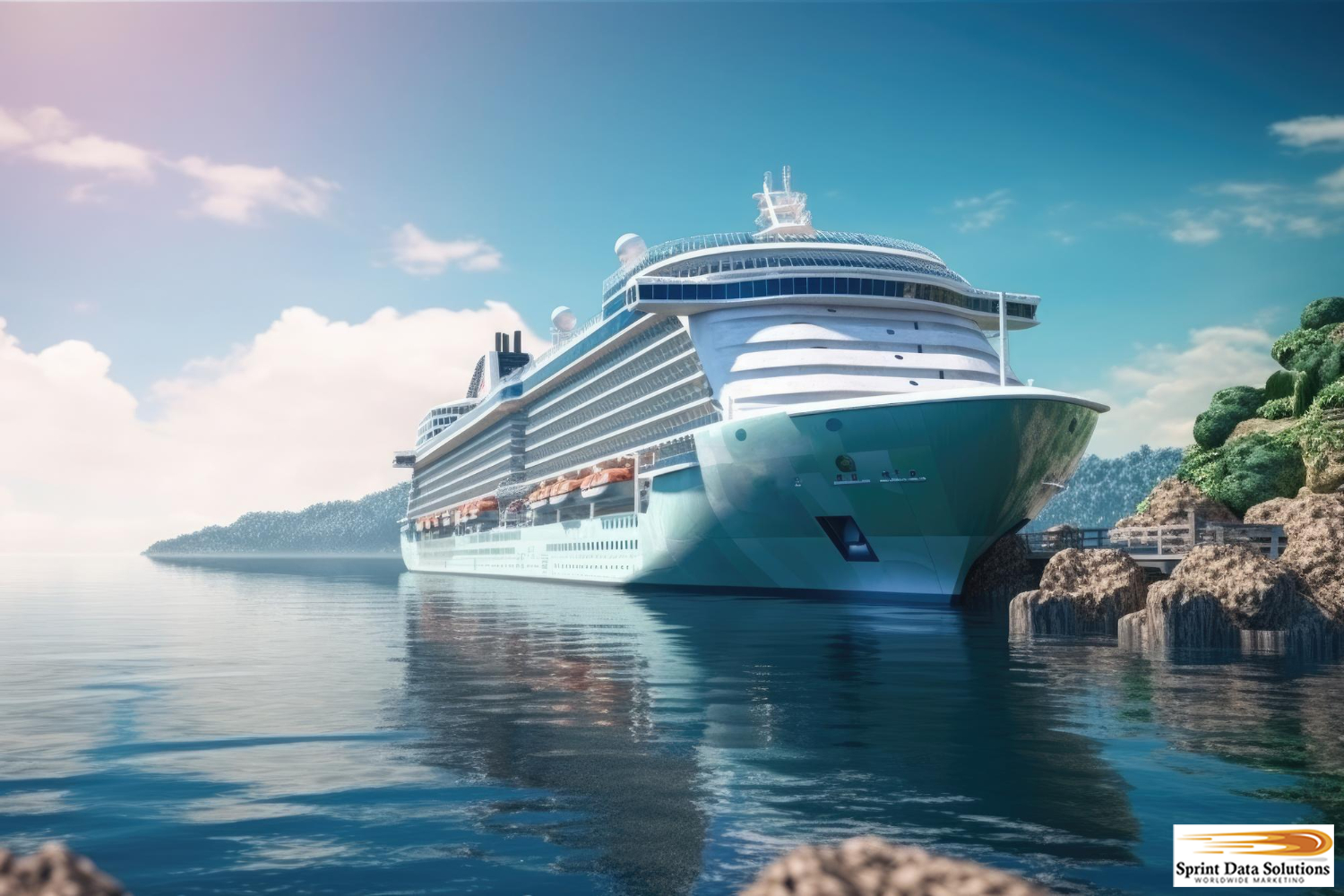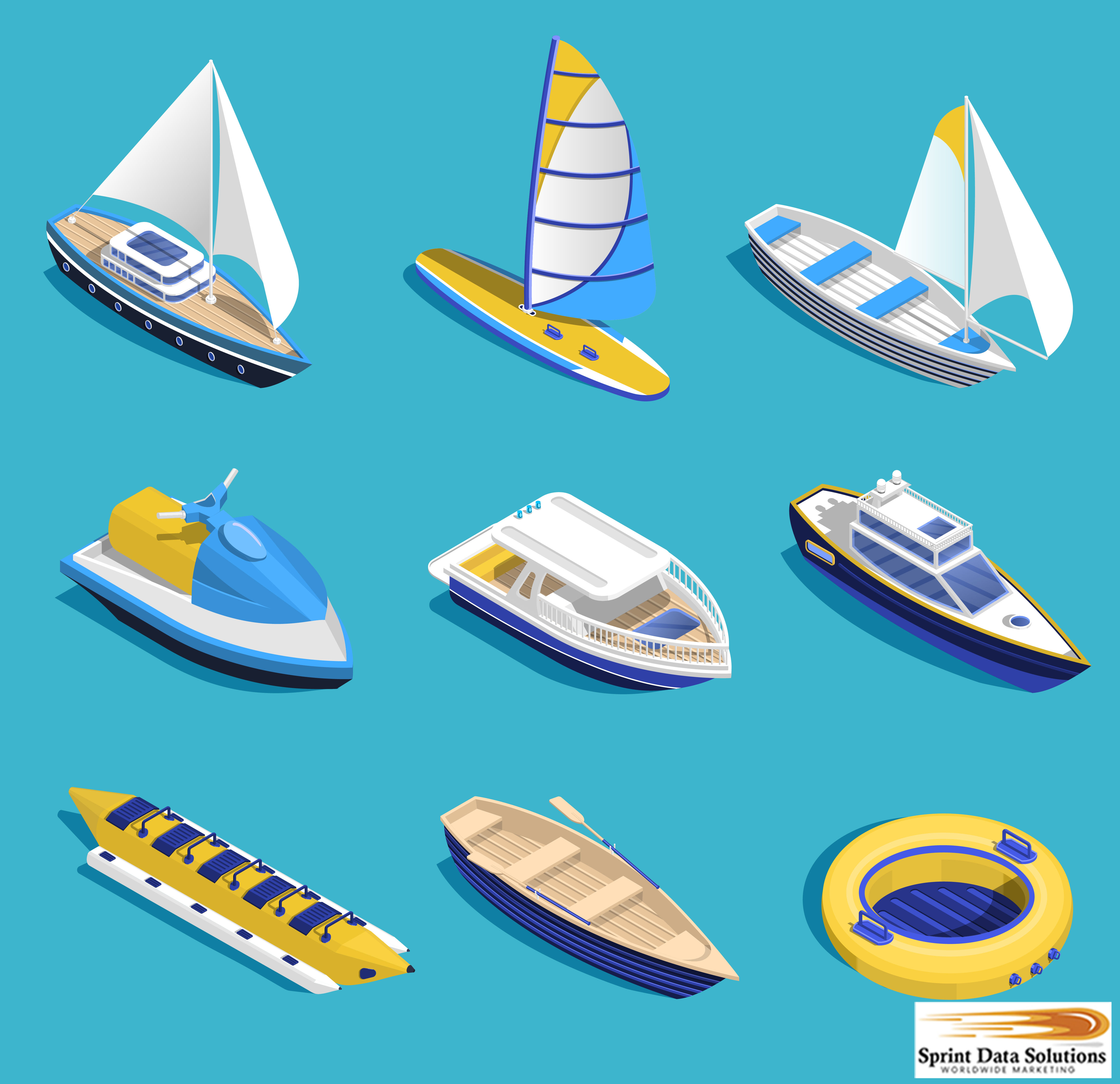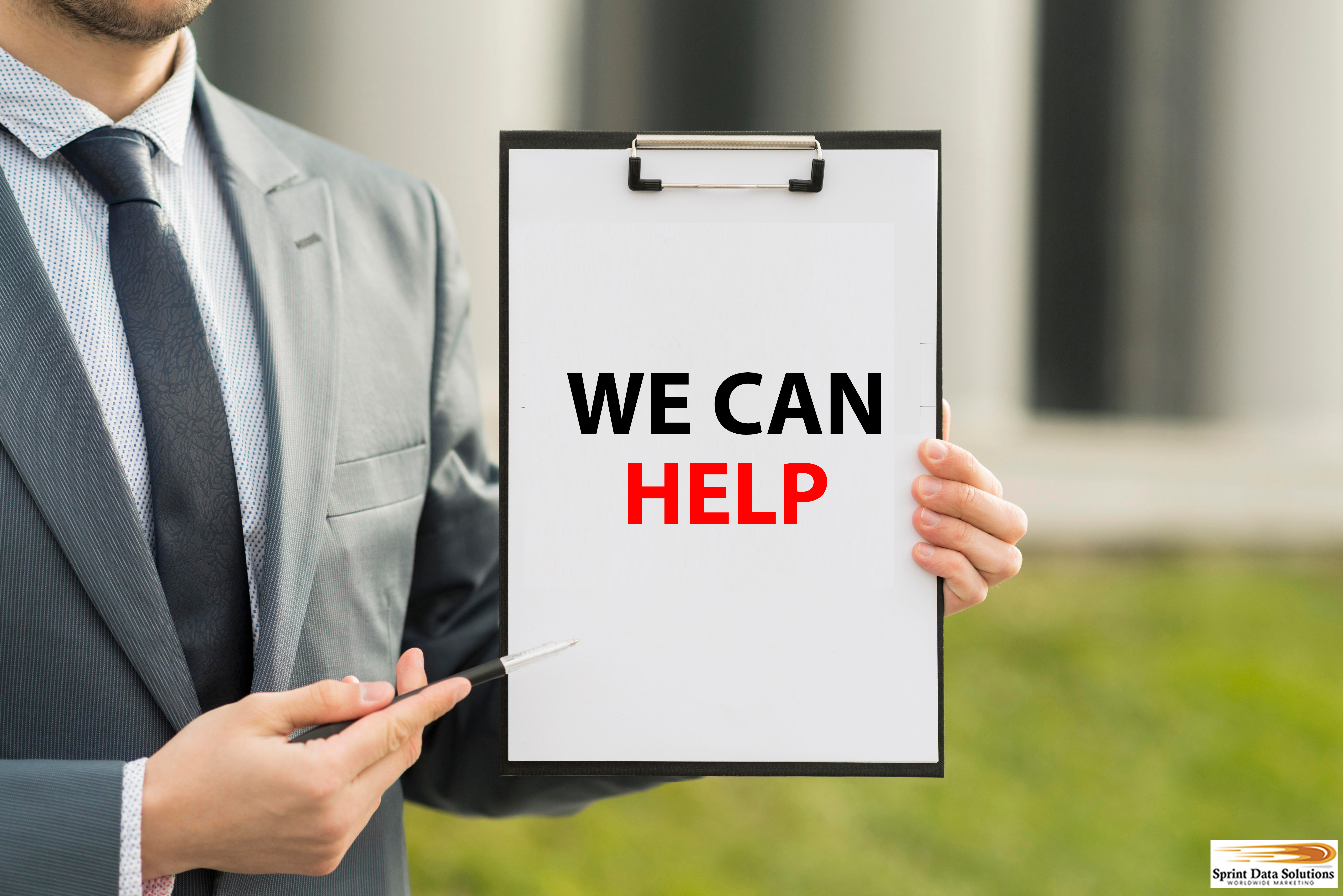Boat Owners Are An Excellent Target Market
Boat owners are an adventurous, passionate, and lifestyle-driven group that embraces the freedom of being on the water. Whether they’re enjoying peaceful days at anchor, embarking on thrilling fishing trips, or taking part in long-distance cruising and navigating challenging waters, boat owners have a strong connection with nature and the outdoors. For many, boating is not just a hobby; it’s a way of life that provides a perfect escape from the everyday grind, offering a sense of serenity, adventure, and camaraderie with like-minded individuals. They are often highly skilled, knowledgeable, and resourceful, making boating a fulfilling and engaging pursuit.
These individuals have a diverse range of interests that go hand-in-hand with their love of boating, such as hunting, fishing, water sports, and outdoor exploration. Many boat owners value family and social connections, using their boats to host gatherings with friends and loved ones while enjoying a relaxing day on the water. Some prefer taking on the challenge of sailing across oceans and seas, pushing their limits while exploring new destinations and waterways. This broad range of activities and interests makes boat owners a unique and versatile audience for businesses that offer products and services geared toward adventure, leisure, and outdoor living.
Reaching boat owners can pose a challenge for marketers, as they are often out on the water and engaged in hands-on, real-time activities that don’t leave much room for passive forms of advertising. However, this active and engaged consumer group presents an incredible opportunity for businesses that are able to effectively connect with them through targeted marketing strategies. They are decision-makers, often with high disposable incomes, and are eager to invest in high-quality products that align with their lifestyle. With the right approach, businesses can tap into this demographic through personalized marketing messages tailored to their interests, needs, and aspirations.
Our boat owners list offers detailed demographic and psychographic insights, giving you the ability to directly reach this valuable group of individuals. The list includes critical contact information, such as email addresses, phone numbers, and mailing addresses, to ensure your marketing efforts reach the right audience. With rich data points, you can personalize your messaging to speak to the specific desires and preferences of boat owners, whether it’s promoting outdoor gear, boating accessories, travel experiences, or services that enhance their time on the water. This highly targeted approach increases the chances of a successful campaign and helps build lasting relationships with this adventurous and discerning group.

Boats Are Growing In Popularity Every Year
The U.S. recreational boat market was valued at approximately $16.26 billion in 2021 and is projected to grow significantly, reaching an estimated $26.18 billion by 2027, reflecting a compound annual growth rate (CAGR) of 8.26%. This substantial growth is being driven by multiple factors, including rapid advancements in marine technology that enhance the performance, safety, and comfort of boats. Additionally, the increasing popularity of outdoor recreational activities, such as fishing, sailing, and water sports, has contributed to a rise in consumer demand. Furthermore, the expanding tourism industry has fueled interest in boating as both a leisure activity and a business asset. Boats are increasingly being used for entrepreneurial ventures, such as hosting corporate clients, operating floating restaurants, and conducting water-based tours, further driving market expansion. The industry’s focus on sustainability, the introduction of electric-powered boats, and the availability of innovative designs are also expected to accelerate market growth, particularly among environmentally conscious consumers and businesses looking to capitalize on new trends. As a result, the recreational boat market is positioned for robust expansion, benefiting from both consumer interest and emerging business opportunities.
Boat Owner Demographics
Each year, over 100 million Americans participate in recreational boating, representing nearly one-third of the U.S. population. Approximately 12% of U.S. households own a boat, highlighting the strong presence of boating in American culture. The average age of a boat owner is 54, yet younger generations are increasingly embracing boat ownership. Millennials now account for 31% of all boat owners, a significant rise that reflects their growing interest in outdoor activities and leisure pursuits. This shift in ownership demographics is encouraging manufacturers and marketers to adjust their strategies to cater to younger, tech-savvy consumers.
The majority of boat owners in the U.S. are either middle-class or high-net-worth individuals. About 61% of boat owners report a household income of less than $100,000 annually, while the remaining percentage of boat owners are typically in the high-income or affluent category, with many enjoying six-figure incomes. The average annual cost of boat ownership in the U.S. ranges from $5,000 to $8,000, including maintenance, insurance, storage, and fuel. This investment in boating is often seen as a luxury pursuit, but it remains within reach for many middle-class families, making recreational boating an appealing lifestyle choice.
A major contributor to the recent growth in the boating industry is the rise of online boat sales, which has made purchasing a boat more accessible than ever before. With just a few clicks, buyers can explore various boat models, compare prices, and make purchases without the need to visit traditional dealerships. This convenience, combined with an increasing interest in outdoor recreation, is fueling a new era of boat ownership, making boating more accessible to a wider range of Americans and boosting the industry’s overall growth.
Boat Owners Are The Ideal Market For Many Industries
Boat owners represent a highly engaged and affluent demographic, making them an excellent target market for a variety of industries. If your business aligns with these sectors, our comprehensive boat owners list is a valuable resource that can help you reach the right audience with precision. Industries such as marine equipment, insurance, recreational products, hospitality, and luxury goods can greatly benefit from our curated boat owners database. This list not only includes key demographic and psychographic insights but also provides in-depth data on boat types, sizes, and usage patterns, ensuring your marketing campaigns are tailored to the unique needs and preferences of this exclusive group. Whether you are offering boating accessories, travel packages, or specialized services, this targeted list will enable you to connect with boat owners who are likely to invest in your offerings.
Boat Insurance
In most U.S. states, boat owners are legally required to carry a minimum amount of liability insurance to operate their vessels safely and in compliance with the law. This typically includes coverage for property damage (PD) and bodily injury (BI) to protect against accidents that result in harm to others or their property. However, many boat owners opt for more comprehensive coverage options, such as full coverage insurance, which combines both comprehensive (comp) and collision (coll) insurance. Comprehensive coverage protects against damages not involving collisions, such as theft, vandalism, or weather-related incidents, while collision insurance covers damages caused by collisions with other boats or objects.
In addition to the standard coverage, many boat owners choose to enhance their policies with add-ons that cater to specific needs and interests. Medical payments (med-pay) or personal injury protection (PIP) coverage helps cover medical expenses for the boat owner and passengers in the event of an accident, regardless of fault. Personal effects coverage protects the personal property of the boat owner, including fishing gear, electronics, and other valuable items that could be damaged or lost while on the water.
For those who frequently take their boats on long trips or enjoy fishing and outdoor activities, roadside assistance coverage can be invaluable. This add-on assists with any towing or emergency repairs needed if the boat breaks down on the water or while being transported. Overall, these additional coverages provide peace of mind and greater financial protection, ensuring that boat owners are fully covered in various situations, from minor mishaps to more serious incidents. By selecting a policy with the right mix of coverages and add-ons, boat owners can tailor their insurance to meet their specific needs, making their boating experience safer and more enjoyable.
Travel And Tourism
Boat owners are passionate travelers, especially when it comes to exploring nature’s waterways. Their journeys span both freshwater systems, like lakes and rivers, and the expansive coasts of oceans and seas. This diverse travel preference makes boat owners a prime demographic for businesses located near these bodies of water. Travel businesses offering services along lakes, rivers, and coastal areas are in an ideal position to cater to this group. Boat owners not only seek travel experiences that offer easy access to the water, but they also require accommodations that are conveniently located near boat launches or docks. Hotels, motels, and short-term vacation rentals that provide this proximity are highly attractive to boaters. Furthermore, many boat owners have an adventurous spirit and enjoy outdoor activities like camping, fishing, and hunting. As a result, wilderness lodges, outdoor tour operators, and companies providing outdoor gear and experiences can effectively reach this market. The boat owner segment is not just about maritime interests; it’s about a lifestyle centered on exploration, relaxation, and adventure in the great outdoors. With access to these specific travel needs and behaviors, businesses targeting boat owners can offer tailored experiences that align with their passions.
Docks
Boat owners of large vessels, such as yachts, houseboats, and pontoons, typically do not tow their boats. Instead, these boats are primarily stored at docks, either on private waterways or at rented docks located on popular public waterways. Many of these owners have access to private marinas or waterfront properties, where they secure a dedicated dock for their boats. For those who do not have private storage, renting dock space at well-established marinas or along busy waterway corridors is a common practice. These boat owners often require additional services, such as boat lifts, which are provided at many dock rental locations to assist with launching and docking the boats. Given the demand for dock systems, boat lift services, and storage solutions, maintaining an updated and targeted boat owners list is crucial for companies that specialize in manufacturing, renting, or servicing docks, lifts, and related marine equipment. With this list, companies can effectively reach and cater to the needs of large boat owners, enhancing their customer base and service offerings.
Boat Storage
Boat owners who do not keep their vessels docked or in water often require storage solutions to ensure their boats are kept safe and protected during the off-season or when not in use. For these boat owners, self-storage companies and outdoor storage lots provide viable options. These facilities offer the necessary space and security to store a wide range of boats, including smaller recreational craft to larger yachts. However, for those who prefer to store their boats at home, having a dedicated space such as a large garage, backyard, or driveway can be just as effective, though it often requires the use of additional storage accessories to ensure the boat’s longevity and condition.
Among the most commonly used storage accessories for boats are boat covers, which are essential for protecting vessels from the harsh effects of weather conditions, such as rain, snow, and intense sunlight. A high-quality cover can prevent fading, moisture accumulation, and debris buildup, keeping the boat clean and ready for use. Additionally, boat jacks and lifts are indispensable tools for boat owners who store their boats in garages, backyards, or outdoor lots. These devices elevate the boat off the ground, preventing potential damage from moisture, dirt, and corrosive elements that can occur when boats are in contact with the soil or concrete. Lifting the boat also makes it easier to perform maintenance tasks and helps preserve the integrity of the hull.
For smaller boats like kayaks and canoes, storage accessories such as garage hoists, wall racks, and ceiling lifts are incredibly popular. These hoists and lifting systems allow owners to store their watercraft vertically or overhead, saving space while keeping them safe from environmental factors. This type of storage also helps prevent wear and tear, keeping the boats in prime condition for when they’re next used. Additionally, kayak storage systems are designed to ensure easy access, making it convenient for boat owners to quickly retrieve their watercraft when it’s time to hit the water. By investing in the right storage solutions, boat owners can extend the lifespan of their boats and watercraft, ensuring they remain in top condition for many seasons to come.
Tow-Capable Vehicles
For boat owners, having a reliable tow-capable vehicle is often essential, particularly if they do not have access to a private dock for their boats. These vehicles, typically heavy-duty trucks, SUVs, or 4x4s, are designed to handle the significant weight and size of boats, making them ideal for transporting boats to and from bodies of water. The towing capacity of these vehicles ensures that boat owners can safely and efficiently haul their boats, whether it’s a large motorboat, a fishing boat, or even a larger inflatable boat.
While smaller boats, such as kayaks or canoes, may be towed by larger sedans or compact SUVs, boat owners with bigger vessels often require more robust vehicles. These vehicles are specifically designed to handle the added weight of the boat, trailer, and accessories, offering the power and stability needed for long-distance towing. In addition to towing the boat itself, many boat owners also rely on their tow-capable vehicles to carry the necessary gear for their water activities. This includes items like life vests, fishing rods, tackle boxes, coolers, and food for a day out on the water.
The preference for trucks or larger SUVs comes from their versatility, as they not only tow boats but also offer ample storage for the accessories that are often part of a boat owner’s lifestyle. For example, pickup trucks with extended bed space provide convenient storage for fishing gear and camping equipment, making them a preferred choice for boat owners who engage in both water and land-based outdoor activities. Additionally, these vehicles are equipped with features such as towing packages, reinforced suspensions, and advanced brake systems, further enhancing their ability to transport boats securely and efficiently.
Boat Trailers, Vehicle Hitches, And Other Vehicle Accessories
In addition to needing tow-capable vehicles, boat owners also require specialized vehicles equipped with a hitch to tow their boats safely and efficiently. To properly transport their boats, they need trailers that are specifically designed for boat hauling, ensuring both secure transport and protection from potential damage. Towing a boat, especially larger or heavier models, places significant strain on the vehicle and trailer, often leading to increased wear and tear. This added stress impacts various vehicle components such as tires, brakes, suspension systems, and the transmission. For boat owners, this means more frequent maintenance and servicing to ensure their vehicles remain in optimal condition. Tires, in particular, endure heavy loads, resulting in faster wear and a higher need for replacements. The brakes are also subjected to considerable strain, especially when stopping a large, heavy boat, requiring more frequent inspections and servicing. Additionally, the suspension system needs to be evaluated regularly, as it helps absorb the stresses involved in towing heavy loads. Companies that specialize in repairs, replacement parts, and vehicle servicing can greatly benefit from access to a comprehensive boat owners list, allowing them to target this niche market of individuals who regularly invest in vehicle maintenance and upgrades to keep their towing capabilities in top condition. These businesses can offer tailored services that address the unique needs of boat owners, ultimately providing the necessary solutions to extend the lifespan of their vehicles and trailers.
Boating Safety Gear
Boat owners prioritize safety gear to ensure the well-being of themselves, their guests, and their vessel in unpredictable conditions. Key items include life jackets and personal flotation devices (PFDs), which are essential for preventing drowning in emergencies. In addition to wearable flotation devices, boaters often invest in throwable flotation devices, such as cushions or ring buoys, which can be tossed to a person in the water. Visual signaling devices, like flares, strobe lights, or distress flags, are critical for attracting attention during emergencies, especially in low visibility conditions. Sound signaling devices, such as air horns or whistles, also play an important role in alerting others of distress, particularly in areas with heavy traffic or restricted visibility. Furthermore, boats are typically equipped with fire extinguishers, which are crucial for responding to onboard fires, especially given the potential for electrical or fuel-related incidents. First aid kits are stocked with supplies to handle common injuries and medical emergencies, ensuring immediate care can be administered if needed. Flashlights or emergency lighting are indispensable for navigation or signaling during nighttime or adverse weather conditions. These safety investments are vital in making boating a safer and more enjoyable activity, minimizing the risk of accidents while providing boat owners and their passengers with peace of mind on the water.
Communication Devices
Boat owners place significant value on reliable communication devices to ensure their safety while on the water, especially during emergencies. One of the most widely used devices is the Very High Frequency (VHF) radio, which is designed to provide clear communication over short to medium distances, making it ideal for contacting nearby vessels or coastal stations. VHF radios are particularly critical in emergencies, as they have dedicated channels for distress calls, enabling boaters to send a distress signal and request immediate help. In addition to VHF radios, satellite phones are another essential tool for boat owners, offering the ability to make phone calls and send text messages from virtually anywhere, including the most remote areas where traditional cellular networks are unavailable. Satellite phones are particularly important for those who venture into the open ocean, where a lack of signal coverage makes standard communication devices ineffective. These phones work by connecting to satellites orbiting the Earth, ensuring that boaters can always reach emergency services, even when miles away from the nearest land. Furthermore, satellite tracking devices and personal locator beacons (PLBs) are becoming increasingly popular among boat owners, as they offer real-time tracking and send distress signals that can be picked up by search and rescue teams, providing an added layer of safety while boating in isolated areas. As a result, communication technology has become a vital aspect of boating, offering peace of mind and enhanced security for those who navigate through the waters.
Navigation Tools
Another key product that boat owners rely on is navigation equipment, which is essential for safe and efficient travel on the water. The range of navigation methods available to boat owners varies from traditional techniques to modern technological innovations. Traditional methods, such as dead reckoning, pilotage, and celestial navigation, require skills honed over time, relying on tools like paper charts, sextants, and compasses to determine a vessel’s course. These time-tested methods are still widely used by some experienced boaters who prefer the hands-on approach.
On the other hand, a growing number of boat owners have embraced more modern tools, driven by advancements in technology. GPS systems, motion sensors, radar, and satellite imagery offer highly accurate and real-time information to help boaters navigate, avoiding potential hazards and improving their overall experience. Additionally, satellite navigation and inertial navigation systems have made it possible to track a boat’s position in any weather condition, increasing confidence for those exploring open waters or engaging in offshore adventures.
Manufacturers of navigation tools—whether traditional or state-of-the-art—can benefit from targeting boat owners who require these specific products to ensure their safe navigation. The demand for these tools varies based on the type of boat and the boating activities, with some boat owners seeking high-tech solutions for leisure and others opting for more traditional navigation methods during long journeys. Our boat owners list is perfectly suited for companies that specialize in the manufacturing and distribution of navigation tools, catering to the diverse needs of this market.
Outdoor Gear
Boat owners are passionate outdoor enthusiasts who often engage in a wide range of activities such as camping, fishing, hunting, and hiking. Their love for the outdoors is directly tied to their boat ownership, as boats provide access to remote locations that are otherwise difficult to reach. These individuals are highly active in various recreational pursuits, and outdoor outfitters can greatly benefit from targeting this demographic with specialized offerings.
When it comes to fishing, boat owners invest in high-quality gear, including rods, reels, fishing lines, bait, and tackle boxes. They are drawn to advanced equipment designed for specific types of fishing, whether it’s deep-sea fishing, freshwater angling, or fly fishing. Additionally, boat owners often purchase camping gear such as durable backpacks, weather-resistant tents, sleeping bags, portable stoves, and lanterns, all essential for extended trips in nature.
Hunting is another key interest for many boat owners, as boats allow them to reach isolated hunting grounds that others cannot access. These individuals are in need of specialized hunting gear like waders for traversing wetlands, precision optics for spotting game, and weapons such as bows, arrows, shotguns, and rifles. Furthermore, they often seek out high-performance outdoor apparel designed to withstand extreme weather conditions while maintaining comfort and mobility.
Given the active, adventure-driven lifestyles of boat owners, they also have a strong affinity for hiking equipment such as boots, trekking poles, hydration packs, and GPS devices. Their connection to nature and outdoor exploration makes them an ideal target for businesses in the outdoor outfitting industry, as their passion for the great outdoors drives their spending on high-quality gear for various outdoor pursuits.
Boat Maintenance Tools
Boat owners often take a hands-on approach to maintaining their vessels, with many preferring to handle routine maintenance and repairs themselves. This DIY mindset means that having the right tools is essential. Standard tools such as pliers, screwdrivers, and wrenches are the basics for any boat owner’s toolkit. These are necessary for everyday tasks like tightening bolts, fixing minor leaks, or adjusting hardware.
However, boat owners also require more specialized tools for tasks unique to marine environments. For example, rigging knives are essential for cutting ropes and lines, often in high-stress situations when docking or untangling cables. Tow ropes, designed to withstand the harsh conditions of the water, are necessary for towing other vessels or being towed in the case of engine failure. Moisture meters help detect water intrusion in the boat’s hull, a crucial tool for maintaining its structural integrity, especially for older boats that may be prone to leaks.
For boats powered by engines, additional equipment is required to keep them running smoothly. This includes fuel, oil, and lubricants to maintain the engine’s performance and avoid corrosion. A multimeter is another valuable tool, allowing boat owners to diagnose electrical issues by checking the battery and circuits. Charging devices and jumper cables are also essential, as battery problems are one of the most common reasons for boat malfunctions, especially when moored for long periods.
Boat owners should also be prepared for emergencies, which can occur unexpectedly out on the water. Waterproof flashlights are crucial for low-light situations, whether it’s navigating after dark or signaling for help. Flares are another vital emergency tool, providing a visual distress signal that can be seen from miles away, especially in low-visibility conditions like fog or stormy weather. Having the right emergency equipment, alongside regular maintenance tools, ensures that boat owners are ready for any situation that may arise while on the water.
Boat Accessories
Boats are equipped with a variety of specialized accessories designed to ensure stability and functionality in the unpredictable environment of the open water. Key items include secure, bolted-down furniture such as tables, chairs, and cup holders that are crucial for maintaining comfort during rough waves. To enhance safety and maneuverability, boaters rely on essential tools like helm pads, anchors, and dock lines, all of which provide greater control and secure docking. Additionally, electrical components are vital for day-to-day operations, such as deep-cycle batteries, waterproof chargers, and various electrical system parts to power everything from navigation equipment to lighting.
Depending on the specific type of boat, owners may also require specialized equipment like sails for sailing vessels, non-slip flooring for enhanced grip on wet surfaces, and mooring gear to ensure safe anchorage when at port. Larger boats or yachts may demand more intricate systems such as automatic bilge pumps, navigation lights, and emergency safety equipment. The diversity of boat types, from recreational speedboats to luxurious yachts, calls for unique accessories tailored to meet each vessel’s specific needs and ensure optimal performance and safety in all maritime conditions.
Alcohol
Boat owners, especially those with pontoon boats and yachts, often enjoy hosting social gatherings on the water. These owners view their boats as an extension of their entertainment spaces, perfect for relaxed, sun-filled days with friends and family. When it comes to beverages, they frequently serve a variety of alcoholic drinks, including beer, wine, and champagne, as these drinks are a staple at their water-based events. In addition to the alcohol itself, boat owners invest in a range of essential drink accessories to enhance the experience. Items such as koozies, which keep cans cold, coolers for storing chilled drinks, and wine buckets designed to maintain the perfect temperature for champagne or wine, are incredibly popular. These accessories not only serve a functional purpose but also add a touch of luxury and convenience, ensuring that the beverages remain refreshingly cool under the heat of the sun. These types of products are key to creating a welcoming, comfortable atmosphere that encourages guests to enjoy their time on the water.
Watersport Gear, Games, And Toys
Boat owners are passionate about enjoying their time on the water, often participating in a variety of watersports and recreational activities. Popular accessories like wakeboards, towable tubes, and water skis are in high demand for thrilling fun on the water, providing endless entertainment for families and adventure-seekers alike. In addition to these exciting sports, many boat owners also enjoy leisurely activities, making water accessories like inflatable floatables, pool loungers, and water hammocks essential for relaxation.
For those with a more adventurous spirit, sea scooters offer an exhilarating way to explore the water with ease, while outdoor games such as floating volleyball or ring toss bring a competitive edge to on-water gatherings. As boating activities are often tied to coastal living, owners frequently invest in high-quality diving and scuba gear, enabling them to explore vibrant marine life, hidden reefs, and underwater ecosystems. These diversions not only enhance the boating experience but also contribute to the growing popularity of eco-tourism and marine exploration. Whether for casual enjoyment or serious sports, the variety of boat accessories available ensures that owners can customize their gear to match their unique needs and passions, making every outing on the water an unforgettable adventure.
The Four Classes Of Boats
Boats are classified into several categories based on their length, which helps to determine their intended use, design features, and regulatory requirements. The smallest category, Class A boats, typically measure under 16 feet in length. These boats are often used for recreational purposes such as fishing, rowing, or short day trips. Class 1 boats, ranging from 16 feet to 26 feet, are slightly larger and offer more versatility, often used for similar activities but with added space and storage for longer trips or additional equipment.
Class 2 boats, which span from 26 feet to 40 feet, are larger vessels that are capable of accommodating more passengers and offer greater stability on the water. These boats are commonly used for more extended journeys, coastal cruising, and recreational fishing. Class 3 boats, ranging from 40 feet to 65 feet in length, represent a further step up in size and luxury. These boats are often equipped with advanced amenities for both comfort and safety, making them ideal for luxury cruising, chartering, and longer offshore voyages.
Boats that exceed 65 feet in length but weigh less than 300 tons are classified as small research vessels (SRVs). These boats are typically employed for scientific research and exploration, with advanced equipment to support various marine studies. Vessels over 65 feet in length that surpass 300 tons generally fall into either the luxury yacht category or are designated as commercial boats, such as cargo ships or larger passenger vessels. Luxury yachts are designed for opulence, offering high-end amenities and spacious living quarters, while commercial boats are built for functionality, efficiency, and heavy-duty tasks, such as transporting goods or passengers across seas or oceans.

The Different Boat Categories
Boats can be categorized into three primary types based on their method of propulsion. The first category is human-powered boats, which includes rowboats, kayaks, canoes, and dinghies. These boats are operated entirely by human effort, relying on paddles, oars, or the physical strength of the operator to move through the water. Often favored for recreational purposes, these boats offer a low-impact way to explore waterways, requiring no fuel or motorized components. They can be used in various bodies of water, from calm lakes to rivers and coastal waters, and are prized for their simplicity and eco-friendliness.
The second category is motorized boats, which encompasses a wide range of vessels, including fishing boats, speedboats, ski boats, and larger cruisers. These boats are powered by internal combustion engines or electric motors, enabling them to cover long distances quickly and carry heavier loads. Motorboats are commonly used for recreational activities like water skiing, wakeboarding, and fishing, and are indispensable for commercial and industrial uses such as transport and offshore operations. Gasoline-powered motors are most common, but with the rise of eco-conscious boating, electric-powered motors are becoming increasingly popular, providing a quieter, cleaner alternative to traditional gasoline engines.
The third type is wind-powered boats, primarily consisting of sailboats. These boats harness the power of the wind through sails to propel them forward. Sailing requires skill and knowledge to manipulate the sails and navigate using wind patterns, making it both an art and a sport. Sailboats can range from small dinghies used in competitions to large yachts designed for long-distance cruising. Some modern boats combine wind and motor power, allowing for greater versatility in various wind conditions. These hybrid boats are equipped with motors to supplement sail power when necessary, offering both speed and maneuverability across a range of environments.
In addition to these propulsion-based categories, boats can also be classified based on their intended purpose, construction, and design. For example, fishing boats are designed specifically for fishing and come in various shapes and sizes, with features like rod holders, bait wells, and trolling motors. Recreational boats, such as pontoon boats and luxury yachts, are designed for leisurely activities on the water, offering comfort, space, and often, additional amenities like kitchens and bathrooms. Utility boats are versatile vessels used for transportation, work-related tasks, or rescue operations, and racing boats are built for speed and agility in competitive environments. Understanding these different boat types and categories helps boaters choose the right vessel for their specific needs, whether for relaxation, sport, or work.
Category A: Ocean Class Boats
Ocean-class boats are built to withstand the harshest conditions found on the open ocean, designed with extreme durability in mind. These vessels are engineered to handle powerful winds, towering waves, and moderate storms, making them ideal for long-distance ocean voyages. Often equipped with robust engines and reinforced hulls, they offer unparalleled reliability in unpredictable maritime environments. Ocean-class boats are typically self-sufficient, often featuring fully equipped living quarters, advanced navigation systems, and onboard storage for extended trips. Owners of these boats are typically seasoned adventurers, prepared for both the technical demands and the physical challenges of ocean travel. With an innate passion for exploration, they often have significant financial resources, as maintaining and operating an ocean-class boat requires a substantial investment in both time and money. Their boats serve not just as a means of transportation, but as mobile homes, enabling them to journey far from land while providing safety, comfort, and independence.
Category B: Offshore Class Boats
Offshore class boats are designed for coastal and nearshore boating activities, making them highly suitable for navigating the open waters a few miles from the shore. While they are ocean-capable, they are not built for extended voyages across the open ocean. These boats are typically crafted to handle the challenges of offshore environments, such as moderate waves, strong winds, and mild storms, though they aren’t intended for prolonged exposure to extreme weather conditions. Offshore boats are favored by individuals who enjoy activities like sport fishing, water sports, and recreational cruising. Their robust construction allows them to offer stability and performance in varying sea conditions, making them ideal for people who frequent the coastal waters or engage in adventurous offshore pursuits. Many offshore boat owners are passionate about fishing, and the boats are often equipped with features to support this, including fishing gear storage, bait wells, and specialized seating arrangements.
Category C: Inshore Class Boats
Inshore class boats are specifically designed for operation in calm waters such as lakes, rivers, and shallow coastal areas. These versatile boats are ideal for recreational activities, offering a smooth and enjoyable ride in areas with relatively calm conditions, such as protected bays or estuaries. They are built to withstand medium-strength winds and moderate wave heights, making them suitable for day trips and leisurely outings. These boats are favored by a wide range of recreational boaters due to their ease of handling and relatively low maintenance, making them an excellent choice for beginners and experienced boaters alike. Inshore boats are particularly popular among individuals who enjoy fishing, water sports, or simply relaxing on the water. They offer ample space for gear and passengers, providing comfort and stability during long days spent on the water. With their compact design, inshore boats can also be easily stored and transported, making them a practical and fun choice for those who want to experience the pleasures of boating on inland waters or the calmer parts of the coastline.
Category D: Coastal Water, Inland, and Sheltered Waters Class Boats
Category D boats are purpose-built for calm waters such as rivers, small lakes, and sheltered coastal areas. These boats are ideal for navigating through tranquil environments, where conditions are generally more predictable with lower winds and smaller waves. The design of Category D boats emphasizes ease of use and stability, making them an excellent choice for beginner boaters who are just starting to explore the world of boating. Popular types in this category include kayaks, canoes, and smaller dinghies, which are highly valued for their lightweight construction and maneuverability. Owners of Category D boats are typically outdoor enthusiasts who enjoy activities such as fishing, leisurely paddling, and exploring scenic waterways. Many of these boaters are also in the process of learning essential skills related to boat maintenance, navigation, and safety. The accessibility and affordability of these boats contribute to their growing popularity among newcomers to boating, who often prioritize simple, enjoyable experiences on the water without the complexity of handling larger, more powerful vessels.
Types Of Boats
You will find boat owners of varying boat types on our boat owners contact list. These boat types include:
- Bowrider Boats
- Cabin Cruiser Boats
- Canal Boats
- Canoes
- Center Console Boats
- Cigarette Boats
- Cuddy Cabin Boats
- Deck Boats
- Dinghies
- Fishing Boats
- Houseboats
- Inflatable Boats
- Jon Boats
- Kayaks
- Motorboats
- Pontoon Boats
- Rowboats
- Sailboats
- Ski Boats
- Skiffs
- Speedboats
- Trawlers
- Tugboats
- Yachts
Access all of these boat owners and more with our boat owners list.
Tap Into The Growing Market Of Boat Owners
Sprint Data Solutions Worldwide Marketing, founded in Las Vegas by a Service-Disabled Veteran, has emerged as a leader in the direct marketing industry, specializing in one of the most extensive and meticulously curated databases in the market. Over the years, we have developed a broad selection of highly targeted specialty lists designed to elevate your marketing strategies. Whether you’re running email marketing campaigns, direct mailers, or telemarketing efforts, our lists provide valuable insights into potential clients, ensuring that your outreach is as effective as possible. Our databases offer more than just contact details; they encompass a wide range of demographic data such as age, income level, and geographic location, along with psychographics, including consumers’ motivations, aspirations, and lifestyle preferences. This rich set of information allows businesses to design highly personalized marketing efforts that resonate with the right audience, leading to higher engagement and conversion rates.
At Sprint Data Solutions Worldwide Marketing, we place a premium on the quality and accuracy of the information we provide. We are committed to delivering only the most reliable, up-to-date contact lists, ensuring that your campaigns reach the most relevant prospects. To maintain the integrity of our data, we adhere to rigorous quality control protocols, incorporating trusted data certification systems such as the National Change of Address (NCOA) and Certified Address Accuracy System (CAAS). Each list undergoes extensive vetting, cross-referencing, and routine updates to keep it current, so you can always count on having access to the freshest and most accurate data available. Our dedication to maintaining this high standard ensures that every marketing campaign you run benefits from precise targeting, optimizing your marketing spend for maximum ROI.

Access The Right Boat Owners For Your Marketing Efforts
At Sprint Data Solutions Worldwide Marketing, we provide comprehensive and actionable data about boat owners to ensure you connect with the right individuals and maximize your marketing efforts. Our extensive database allows you to filter, sort, and refine your list with precision, making it easier than ever to target your ideal audience. Whether you’re seeking detailed demographic information, lifestyle preferences, or specific boating habits, our lists offer in-depth insights that enable you to tailor your marketing strategies effectively. By working with our team, you’re not just purchasing a list; you’re gaining access to a full spectrum of data analysis that helps you fine-tune your outreach to achieve the highest possible return on investment. From cold calling to email campaigns and direct mail marketing, we provide solutions that are designed to meet the specific needs of your business. Our experts will walk you through every step, ensuring that you fully leverage the data to optimize your approach and successfully reach your goals. Contact us today at Sprint Data Solutions Worldwide Marketing, and let us equip you with the tools and insights you need for unparalleled marketing success.






